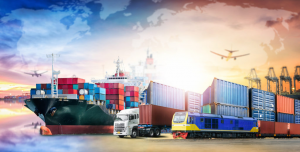
The Philippines had the highest logistics cost as a percentage of sales at an amazing 27.16% followed by Indonesia at 21.40%, Vietnam at 16.3%, lastly Thailand had the lowest at 11.11%.
The breakdown of the cost are 10.71% for transportation, 8.78% for inventory carrying, 5.20% for warehousing and 2.47 percent for logistics administration.
In 2016 the Philippines ranked 71st out of 160 countries in the Logistics Performance Index of the World Bank. Current ranking was due to the country’s long-overdue infrastructure gap and regulations that were deemed inconsistent and burdensome. Despite this, the country jumped 11 notches to 60th out of 168 countries in a 2018. However, compared to its Asean neighbors, the Philippines ranked in the middle as it placed sixth out of 10 member-states
Among the six LPI components measured by the World Bank, the Philippines recorded its highest score in international shipments, where it placed 37th while Timeliness was the country’s weakest link—it ranked 100th in this category. In infrastructure, the Philippines ranked 67th and placed 69th in logistics quality and competence. Other components include tracking and tracing (57th) and customs (85th).
“Many times infrastructure takes time to build, and there are many issues involved like right of way, so maybe that is something that has hampered Philippine competitiveness,” he added.
Transportation of cargo freight in the Philippines predominantly relies on waterways but it doesn’t mean road transport should be dismissed. Even though the country has seen improvement in the overall freight transport service, a large part of the road network remains in poor condition and intermodal integration is low, causing slow movements of goods and services. Improvement of road transport infrastructure is integral for strengthening the overall logistics service of the country. The government plans to remedy this by bringing in foreign players, to invest in the transport infrastructure of the country through their “Build, Build, Build” Initiatives.
NEVERTHELESS, former Tariff Commissioner George N. Manzano, expressed support for the government’s initiative to mainly improve infrastructure; however, he noted that the software side of logistics should be addressed as well.
Though the archipelagic nature of the Philippines may come as a challenge, this gives the government more reason to work harder, be creative and more efficient in its logistics performance and finding solutions.
It is stated in “Philippines Freight & Logistics Market Study – Market Trends, Analysis & Forecasts to 2023” that the Philippine freight & logistics market is expected to reach a market value of USD 60.22 billion by 2023.
SEE ALSO: